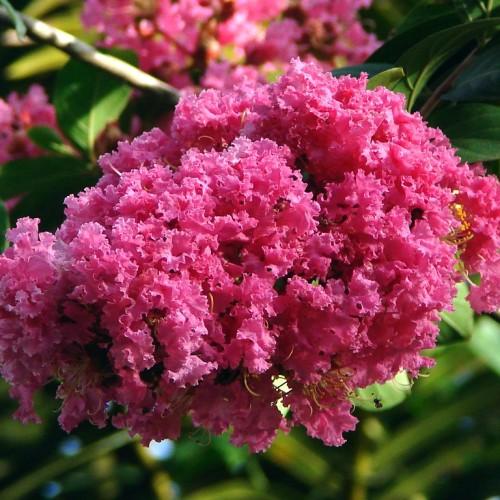
crape myrtle
Lagerstroemia 'Choctaw'
Cycle:
Perennial
Watering:
Average
Hardiness Zone:
6 - 9
Flowers:
Flowers
Sun:
Full sun
Leaf:
Yes
Growth Rate:
High
Maintenance:
Moderate
Drought Tolerant:
Yes
Salt Tolerant:
Yes
Care Level:
Medium
watering
For Crape Myrtle, water at least twice a week, providing about 1 inch of water per week. Make sure water is evenly spread out over the roots of the plant. Generally, water in the morning or evening as opposed to mid-day to avoid rapid water evaporation. In periods of high heat or lack of rain, water more frequently. Never allow your Crape Myrtle to dry out completely; regular moisture is necessary for healthy growth. In order to ensure the best results, water at the soil level rather than from above.
sunlight
Crape myrtle (Lagerstroemia 'Choctaw') is a hardy plant species that prefers full sun, meaning it should receive at least 8 hours of direct sunlight per day. For optimal growth, crape myrtle should receive full sun exposure throughout the morning and early afternoon, up until mid-afternoon. If there is a lack of direct sunlight, it is important to provide crape myrtle with the best light exposure available, such as from a south- or southwest-facing window, to ensure maximum productivity. It is important to note that crape myrtle may not be as resilient in the face of extended hot afternoon sun in certain climates, so it may be best to remain cautious and provide dappled light for up to 5 hours after midday in areas with intense heat.
pruning
Crape Myrtle (Lagerstroemia 'Choctaw') should be pruned in the late winter or early springtime, before the new growth begins to bud, to ensure that the new growth is able to thrive during the upcoming season. Pruning should consist of removing deadwood, crossing branches, and selectively thinning out some of the older, woodier branches to promote air circulation and healthy growth of new shoots. Older, thicker branches of the crape myrtle should be reduced in length to increase plant vigor and encourage flowering. Pruning should be moderate, as removing too much of the foliage can significantly reduce blooms and potentially harm the plant. The goal is to establish an aesthetically pleasing framework that allows light to penetrate for the interior of the plant.
